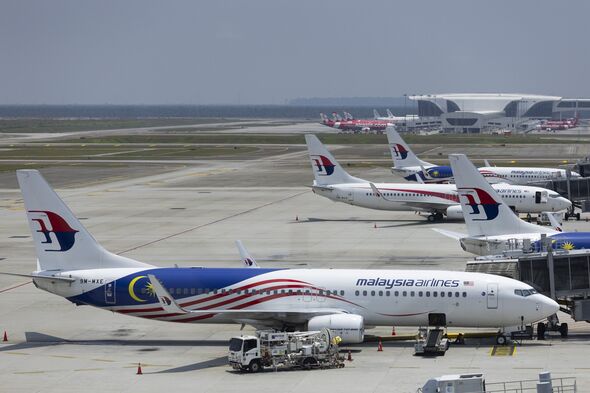New research on the disappearance of flight MH370 claims to have resolved the 10-year mystery based on its final two satellite communications recorded.
University of Tasmania researcher Vincent Lyne suggested the final messages received from the vanishing plane can offer a solid indication of the location of the plane’s remains.
In a paper set for publication in the Journal of Navigation, the research scientist reviewed the final satellite communications of MH370 to establish its flying pattern before its disappearance.
The assessment challenges previous claims that the plane had dropped into “an uncontrolled high-speed gravitationally accelerated dive following fuel starvation.”
Instead, Dr Lyne argued the communications, paired with a review of debris damage by air-crash investigator Larry Vance, “support the hypothesis of a controlled eastward descent”, suggesting premeditation to make the Malaysia Airlines flight vanish.
Dr Lyne said: “This work changes the narrative of MH370’s disappearance from one of no-blame, fuel-starvation at the 7th arc, high-speed dive, to a mastermind pilot almost executing an incredible perfect-disappearance in the Southern Indian Ocean.
“In fact, it would have worked were it not for MH370 ploughing its right wing through a wave, and the discovery of the regular interrogation satellite communications by Inmarsat — a brilliant discovery also announced in the Journal of Navigation.”
He added: “In recent work, I show that damage to MH370 wings, flap, and flaperon were similar to the ‘controlled ditching’ performed by Captain Sully on the Hudson River for a bird-struck US Airways Flight 1549 on the 15th of January 2009.
“This justifies beyond doubt the original claim, based on brilliant, skilled, and very careful debris-damage analyses, by decorated ex-Chief Canadian Air-crash Investigator Larry Vance, that MH370 had fuel and running engines when it underwent a masterful ‘controlled ditching’ and not a high-speed fuel-starved crash.
Dr Lyne also argued the new research provided a clearer path for where MH370 may have crashed, urging future searches for the wreck to focus on a specific section of the Southern Indian Ocean.
Writing in a LinkedIn article announcing the upcoming publication of his research, he said: “Encouragingly we now know very precisely that MH370 is where the longitude of Penang airport (the runway no less) intersects the Pilot-in-Command home simulator track discovered and discarded by the FBI and officials as ‘irrelevant’.
“That pre-meditated iconic location harbours a very deep 6000 m hole at the eastern end of the Broken Ridge within a very rugged and dangerous ocean environment renowned for its wild fisheries and new deep-water species.
“With narrow steep sides, surrounded by massive ridges and other deep holes, it is filled with fine sediments—a perfect ‘hiding’ place.”
Dr Lyne added: “I’m finally relieved for those waiting for loved ones, as they will now know where they are, and can plan for their discovery.
“Hopefully this will be in the near future if officials can accept the alternate interpretation that what most likely happened to MH370 was carefully pre-meditated. It is still hard to accept that anyone could have planned this and executed it almost perfectly.”
The families of the 239 missing passengers have continued to demand answers and earlier this year appealed to the Malaysian government to launch a new search for missing flight MH370.
